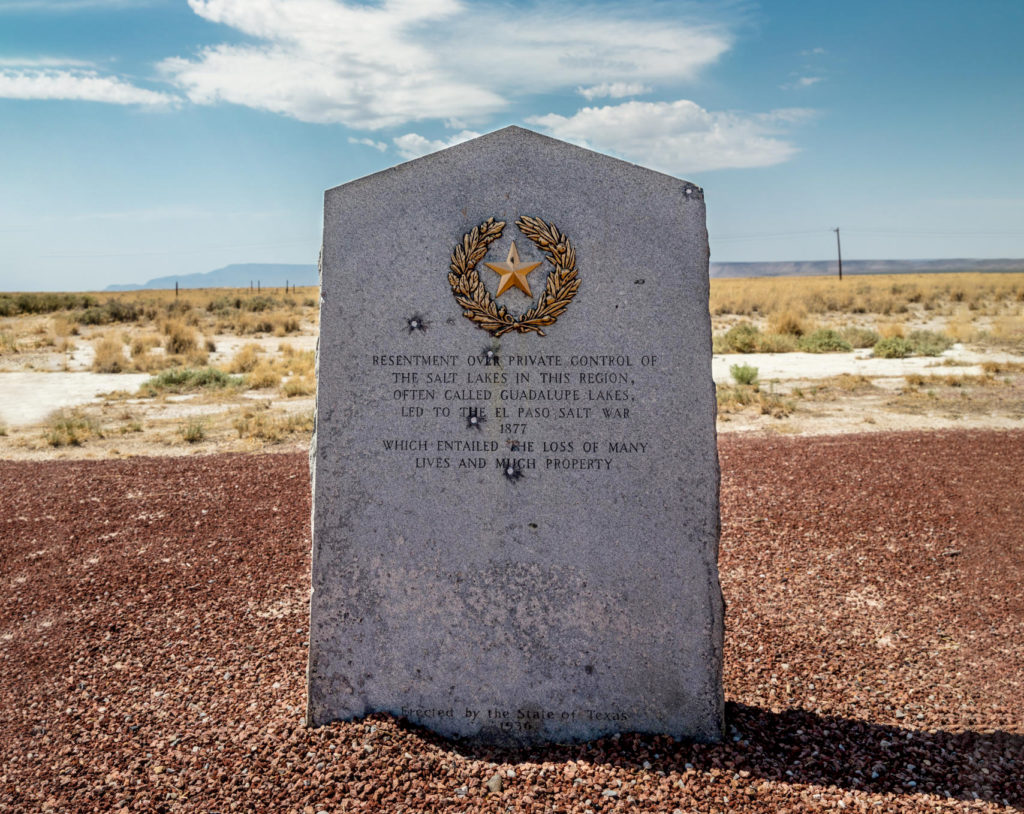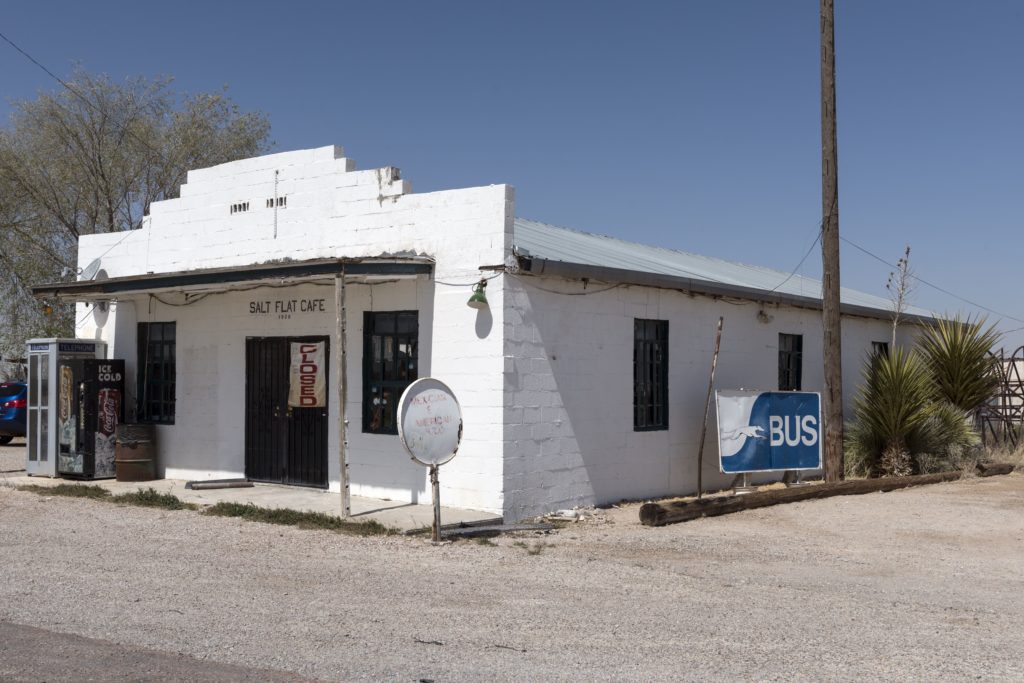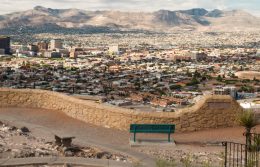City Spotlight: Salt Flat
Heading east from El Paso on U.S. Route 62 takes you across a wide expanse of barren landscape that stretches toward the Guadalupe Mountains. It’s a mysterious, desolate part of Texas — an overlooked corner of the state that once played a central role in an all-but-forgotten chapter of Texas history known as the El Paso Salt War. The landscape owes its peculiar geology to an ancient lake that once covered this region of the Rio Grande Valley and the seasonal pools that still form in the flat muck. Those lakes leave massive salt deposits that were valuable to both Mexican and American settlers.
Curiously, the tiny ghost town of Salt Flat — which is located about 90 miles east of El Paso on U.S. Route 62 — only derives its name, if not its history, from that natural resource. Like so many little roadside towns, the story of Salt Flat is one of 20th-century, entrepreneurial gumption, a town born out of a dream of building a tourist attraction that hardly lasted more than a generation.

A War for Salt
The salt flats of West Texas were formed by shallow lakes created by rainwater that washed out of the Guadalupe Mountains. The accumulated salts and minerals were used by Native American tribes for centuries, and then by Spanish and Mexican colonizers. In the 1860s, as Texans pushed further west, the valuable resource became a setting of conflict as El Paso businessmen tangled over securing their rights to the salt flats.
The competition for salt rights escalated into a violent standoff between factions on both sides of the border. The Texas Rangers and the U.S. Army even stepped in to keep the peace. In the end, around a dozen people were killed in the skirmish, a short tussle that became known as the El Paso Salt War.

A Respite for Thirsty Tourists
The Salt War was nearly forgotten when entrepreneur Ed Hammack arrived with his own enterprising ambitions. In the late-1920s, Hammack saw opportunity in a new highway that was being constructed between El Paso and the Carlsbad Caverns in New Mexico. He built a store and gas station along the route and, together with a businessman named Arthur Grable, opened cafés, stores, gas stations, and tourist courts. By the 1930s, the fledgling town of Salt Flat boasted a bus station. It wasn’t until over a decade later, in 1941, that a post office was established. By the 1960s, around 125 people called the town of Salt Flat their home.
Salt Flat, however, wouldn’t last: The population quickly diminished in the 1970s. Today, it is a ghost town that consists of a few abandoned buildings, though Greyhound buses will still stop to pick up passengers at Hammack’s old café, if they can wave it down in time. Tourists these days are more interested in exploring the wide, muddy flats that still fill with water during seasonal rains, creating striking and otherworldly vistas.
Click here to read about the ghost towns of Texas that found a second life.
© 2020 Texas Farm Bureau Insurance



